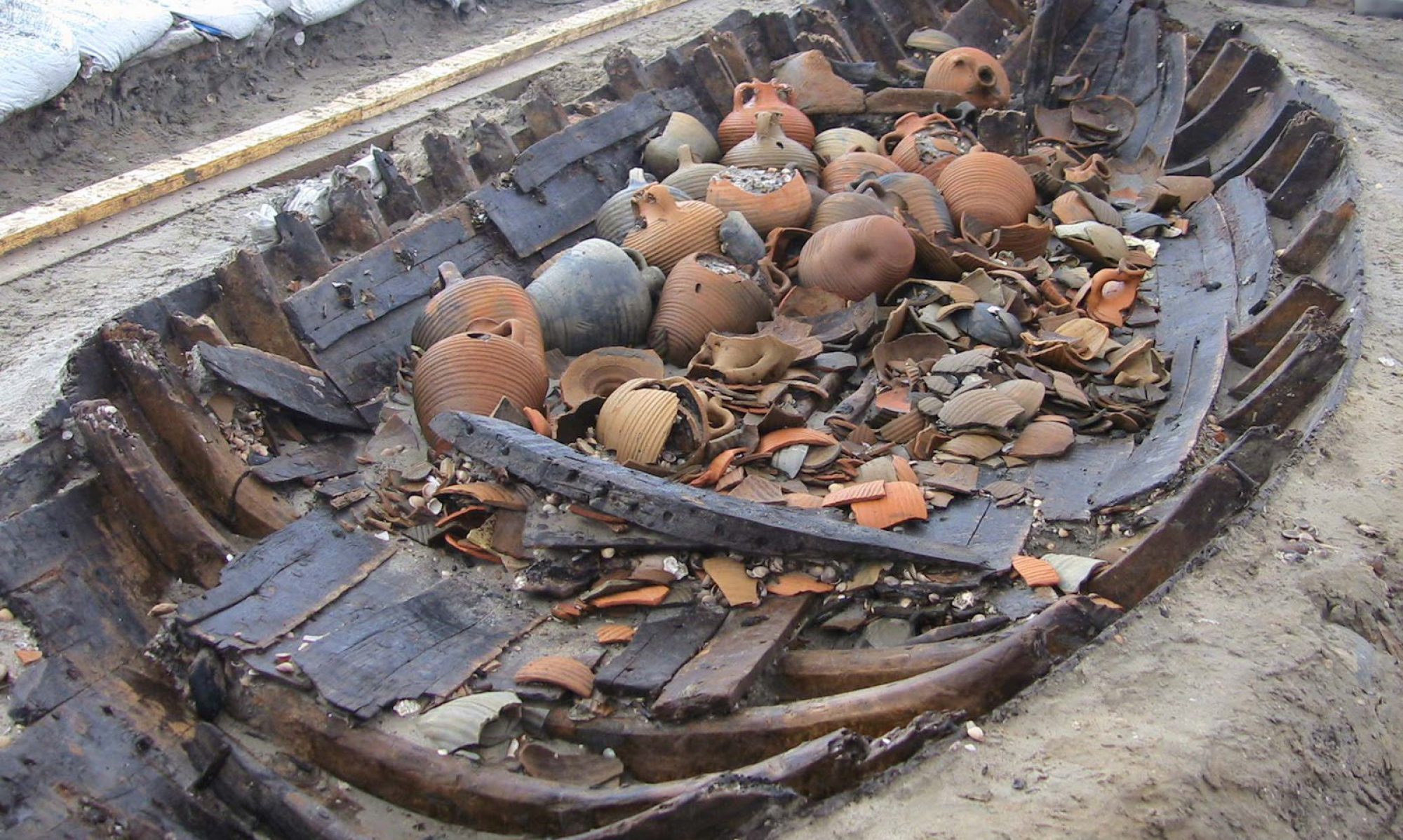Researchers investigating a 14th century burial ground have identified a rare case of “coffin birth” – a gruesome phenomenon in which a deceased pregnant woman’s fetus is expelled within the grave.

The remains of a mother and fetus were buried alongside those of two other children in the early days of the Black Death in Italy, however researchers cannot say for certain that they died of the plague [Credit: Fabrizio Benente (Universita di Genova – DAFIST)]
The event, which has seldom been reported in archaeology, is known as postmortem fetal extrusion. It results from a build-up of gas pressure within the decomposing body.
“In this case, we have a partial expulsion of a 38- to 40-week-old fetus, which was found to be complete and to lie within the birth canal,” Deneb Cesana, at the University of Genova, told Seeker.
The remains of the woman and her unborn baby were originally uncovered in 2006, interred with two other young individuals that scientists say were aged 12 and three years old. Only recently has the discovery been fully investigated.
The research was led by Cesana and her colleagues Ole Jørgen Benedictow, a plague historian at the University of Oslo, and Raffaella Bianucci, a bioanthropologist at the University of Warwick in England. Their work appears in the journal Anthropological Science.
The gravesite was found in the cemetery of the “ospitale” (hostel) of San Nicolao di Pietra Colice, located some 45 miles from Genova.
The hostel, which also housed a church, was situated in the Northern Apennines at about 2,600 feet above sea level, and was used as a resting place by travelers and pilgrims heading to Rome and trekking along the two major transit routes of the Liguria region.
“The woman was found laying slightly on her side, while on her left there were two young individuals of unknown sex,” said archaeologist Fabrizio Benente, of the University of Genova.
Benente, who was not involved in the anthropological study, directed the excavation campaign with a team of the International Institute of Ligurian Studies and the University of Genova.
“This was the only multiple burial found at the cemetery,” he said. “The others were all single graves.”

(a) Skeleton of the adult female (b) Skeleton of the 12-year-old sub-adult (c) Skeleton
of the 3-year-old sub-adult (d) Skeleton of the 38–40-week-old fetus [Credit: Cesana, D., Benedictow, O.J., & R. Bianucci]
He added that the corpses had been buried simultaneously and directly into the soil, and dated the burial to the second half of the 14th century.
The timing corresponded to the arrival of the Black Death in Genoa in 1348. The researchers hypothesized that the woman and the two children likely died of the bubonic plague.
Bianucci’s analysis confirmed that three of the four individuals – the woman, the fetus, and the 12-year-old child – tested positive for the F1 antigen of Yersinia pestis, the bacterium that causes the plague.
“This is the first evidence of Y. pestis infection in 14th-century Liguria,” Bianucci said.
“Our finding supports the notion that the contagion, which had originally started from Genoa’s port area, progressively spread and disseminated through the main communication routes,” she added.
Anthropological investigations carried out and funded by the Archaeological Museum of Sestri Levante and the Archaeological Superintendency of Liguria showed that the woman, who was about 5 feet 11 inches tall, was between 30 and 39 years old when she died.
It emerged that she had several ailments during her life. Her teeth revealed localized periodontitis and linear enamel hypoplasia – a band-like dental defect that denotes childhood physiological stress – while her bones showed evidence of other diseases.
The woman also suffered from congenital hip dysplasia and was likely affected by Legg–Calvé–Perthes disease, a childhood condition that affects the hip, resulting in a permanent deformity of the head of the thigh bone (femur). She likely walked with a limp.
The skeleton of the 12-year-old showed signs of lesions that were possibly linked to metabolic diseases or nutritional deficiencies. The 3-year-old child had no evidence of disease.
The researchers have not yet conducted DNA analysis that will determine the sex of the children and whether they have a relationship with the pregnant woman.
According to Benente, it is possible that they were her children. He believes that they ended up in the mountains, far from the villages, because the hostel of San Nicolao might have worked as a lazaretto, a hospital for people afflicted with contagious diseases.
“She was in advanced pregnancy and limping,” Benente said. “This wasn’t the best condition to go on a pilgrimage to Rome, possibly with two kids.”
According to the authors of the study, every conclusion is premature before DNA tests and further research are carried out.
“At the moment we can really only say that the skeleton of this unfortunate and frail woman is providing us with a new case of coffin birth,” Bianucci said, “which adds to the limited number reported so far.”











You must be logged in to post a comment.